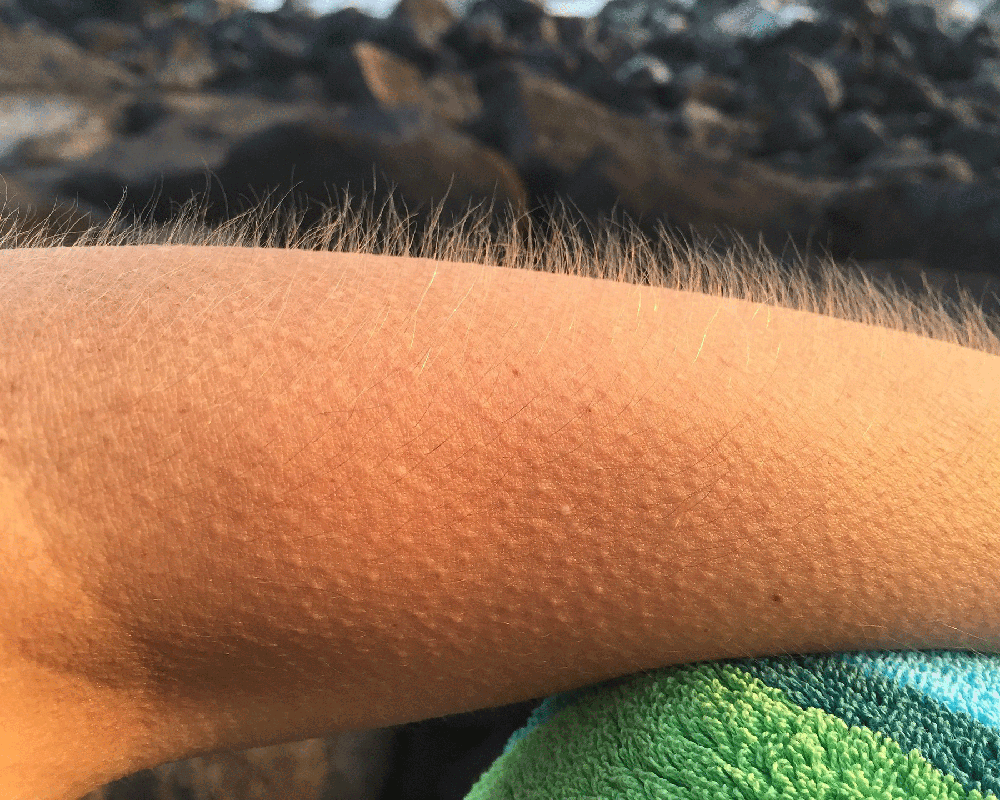

An unexpected cold breeze, almost tripping over your own feet, a particularly high note hit by a singer. All are vastly different experiences, but they share one thing in common: They can cause goosebumps. But what exactly are goosebumps, and why do we get them? Scientists have a good understanding of the first question, but why they happen is still a bit of a mystery.
The most straightforward thing about goosebumps is their name. When geese are freshly plucked, their skin creates raised bumps where the feathers were. The mechanism that creates goosebumps on humans is also pretty simple. At the end of hair strands closest to the skin, known as the root, are tiny muscles called erector pili. When these muscles tense up, or contract, they cause the hair to stand straight up.
Surprisingly, scientists are not entirely sure why we get goosebumps. But they think they are likely a hand-me-down survival mechanism from our ancestors. Somewhere in the human lineage, we were once covered in much thicker, longer hair than we are now. When early humans would get cold, their hairs would lift and separate slightly. This would trap a small amount of air close so to the skin, effectively creating a layer of insulation.
That all makes perfect sense, but why do we get goosebumps when experiencing something pleasurable, like the sound of beautiful music?
Dr. Mitchell Colver, a researcher at Utah State University, studies goosebumps and why they form in scenarios when people aren’t cold. Specifically, he studies “frisson”, or the waves of pleasure running over the skin. It’s a sensation as many as two-thirds of humanity feels.
The latest theory, he says, is that it’s a part of our fight-or-flight response, an innate survival mechanism that causes us to react within milliseconds to stimuli like unexpected noises—think sticks snapping nearby while walking in the woods at night. Without having to think about it, those snaps immediately cause our body to deploy adrenaline, a chemical that stimulates increased breathing, sweating, and a racing pulse. All of these physical responses primes our bodies for action (flight or, as they say, fight).
Adrenaline also triggers goosebumps. Colver says our brains are so fine-tuned to keep us alive that our ancestral habit of anticipating snapping sticks carries over to our experience of music and art.
“The vocal cords of a skilled singer are trained to scream in tune. So some of the ways vocal cords vibrate when singing are similar to the vibrations of someone screaming bloody murder,” says Colver. So if you’re listening to music and something unexpected happens in a song (a high note, chord change), and our fight-or-flight response reacts. Something is wrong! Goosebumps deployed. Once we our cognitive abilities kick in to tell us to settle down and enjoy the art, the fight-or-flight response is halted. We even get a flush of dopamine, a happiness-inducing chemical, out of the experience.
No longer sensing the tune as a warning call, we recognize it as something beautiful and pleasing, says Colver. “It’s like evolution is rewarding us for figuring out something isn’t a threat.”
